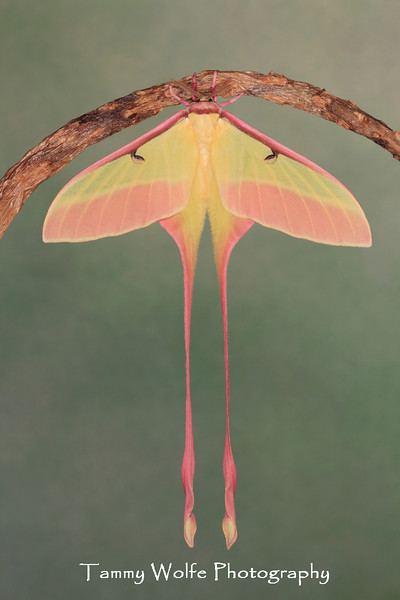Genus Actias Rank Species | ||
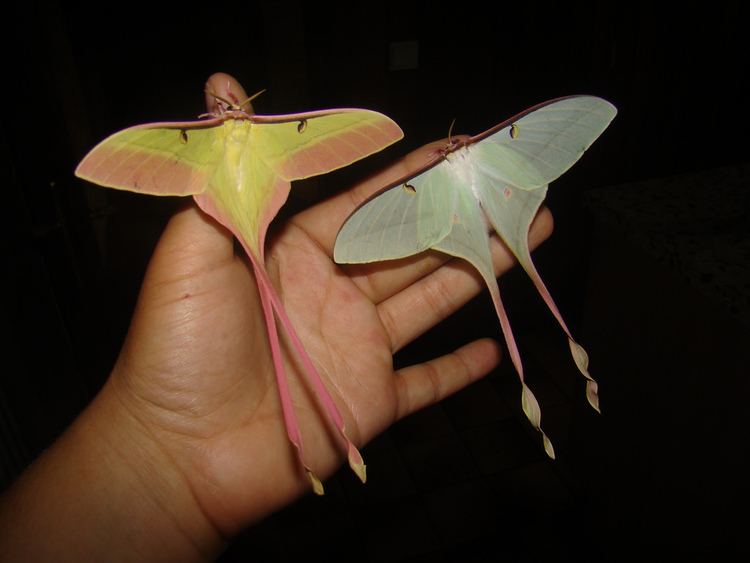 | ||
Similar Actias, Actias selene, Graellsia isabellae, Malaysian moon moth, Argema | ||
Actias dubernardi chinese moon moth prettiest moth ever
The Chinese moon moth or Chinese luna moth (Actias dubernardi) is a moth of the Family Saturniidae.
Contents
- Actias dubernardi chinese moon moth prettiest moth ever
- Actias dubernardi chinese moon moth rearing
- Range
- Life cycle
- Egg
- Larva
- Pupa
- Adult
- Host Plants
- References
Actias dubernardi chinese moon moth rearing
Range
This moth can be found in parts of China.
Life cycle
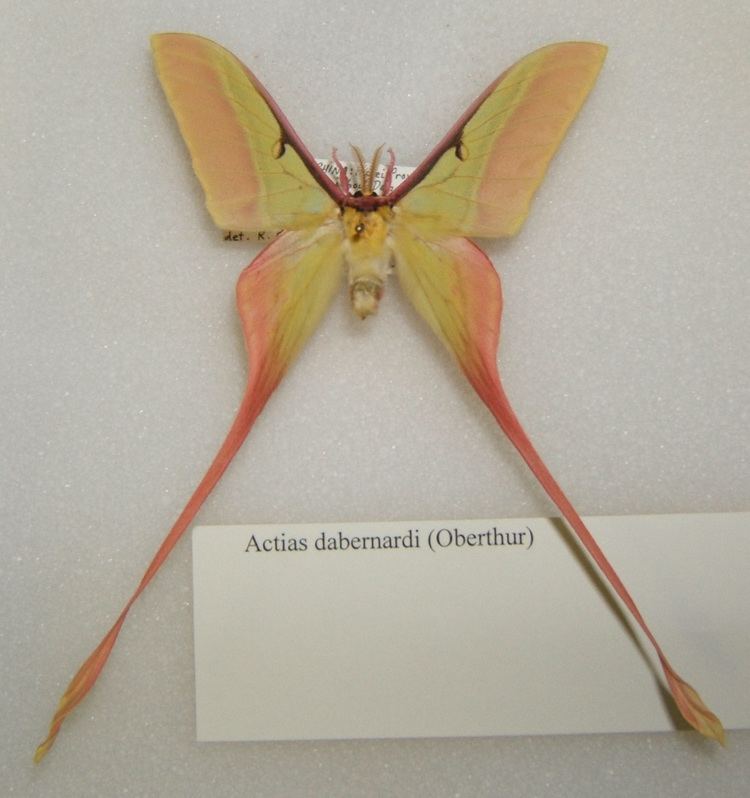
It takes 70–85 days from an egg to the adult, depending on the temperature and humidity conditions. It uses its colorful wings to attract its mate
Egg
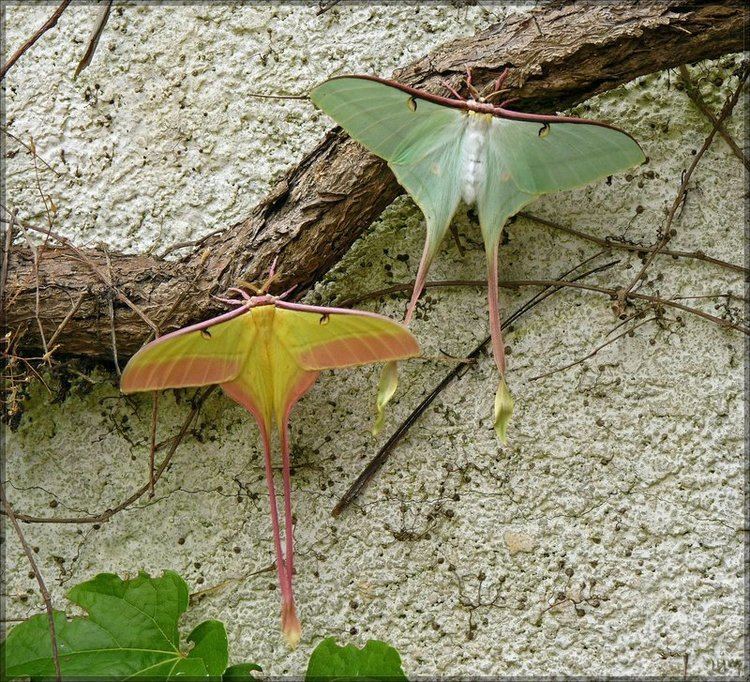
Female lays up to 120 eggs, she doesn't care about the place of ovaposit. The egg is oval-shaped, 1,5mm x 1mm; whitegrey colour, firmly stuck to branches or sides of the cage that the female had been kept in. 4-5mm long caterpillars hatch after 10–14 days, the warmer and the higher the humidity, the quicker it happens.
Larva
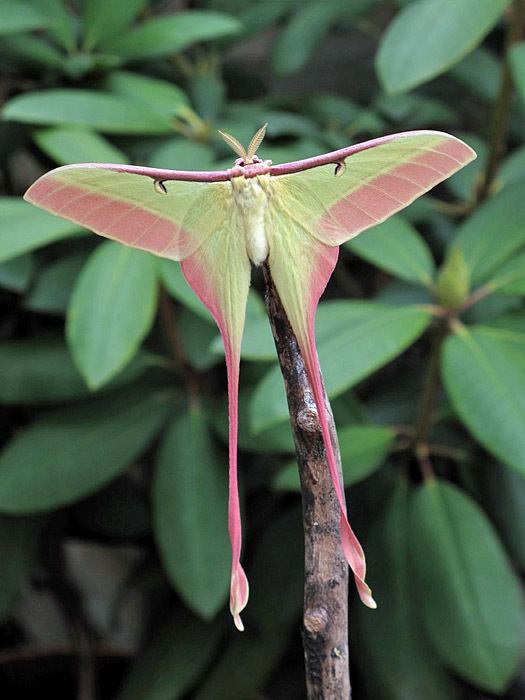
Newly hatched larva is of black colour with hairs, it sheds its skin 4-5 times in its larval stage. Until the second instar it is orangebrown, after which it changes into beautiful green with silver spots. It is hairy in all its stages, and it feeds on pine tree. Fully-grown caterpillar is 60-75mm long. It spins its brownish cocoon on the soil, but more often among pine needles. They are easy to rear, so long as you can get them to eat in the 1st instar. The species comes from high mountainous regions, so it is quite cold-hardy. It is best reared in-doors, sleeved on a small pine-tree.
Pupa
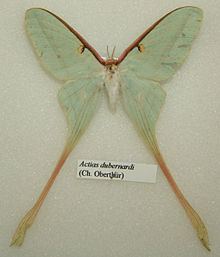
The chrystalis is about 35mm long, and the imago emerges from the cocoon after about 4 weeks, dependent on the temperature and humidity.
Adult
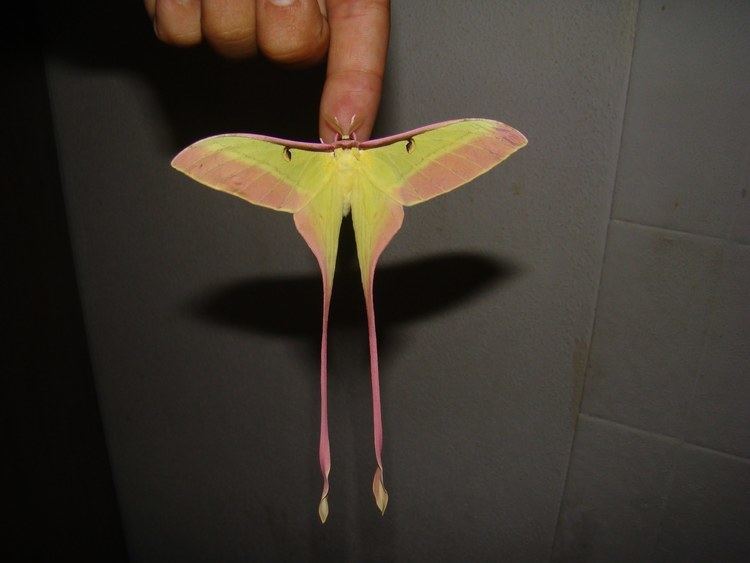
The lifespan of an adult moth is brief, typically ranging from 10 to 12 days, with females living slightly longer due to their fat reserves. Mating can be readily achieved in a medium-sized cage. A notable hybridization with Graellsia isabellae was successfully accomplished some years ago by a collective of French entomologists, including D. Adés, R. Cocault, R. Lemaitre, R. Zaun, and R. Vuattoux.
Host Plants
Pine tree - Pinus sp. Caterpillars rather like Pinus sylvestris, but they will also eat Pinus nigra.
